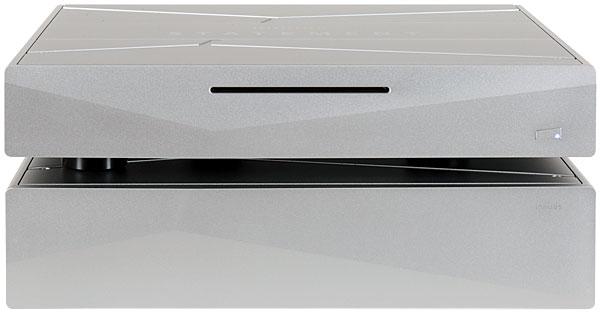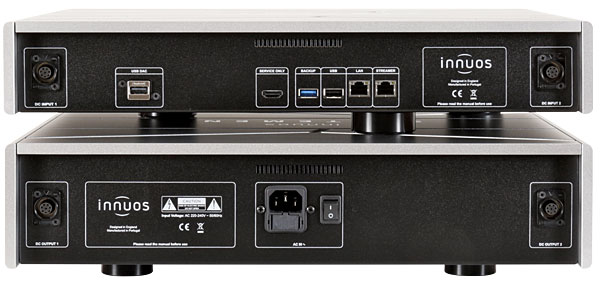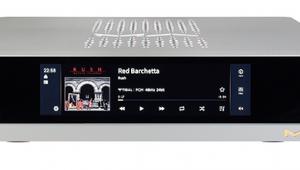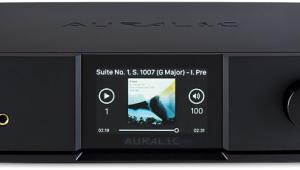Innuos Statement Music Server

 Aiming high, this flagship two-box music server uses a separate, outboard linear power supply. But is this the perfect solution to all your music storage and playback needs?
Aiming high, this flagship two-box music server uses a separate, outboard linear power supply. But is this the perfect solution to all your music storage and playback needs?
The role of the hi-fi music server is changing. As we've noted in the past, what was once no more than an optimised NAS device, designed to feed an external network music player, has now become a complete storage playback solution, designed to connect straight to a USB DAC or, in some cases, with onboard digital-to-analogue conversion straight into an amp or preamp.
We've seen this change in the Melco range, from its entry-level models right up to the range-toppers, and the same applies in the ranks of the lineup from Innuos, which starts with the ZENmini Mk3, at £899 in its most basic form with just 1TB of HDD storage, and tops out with the model we have here, the two-box Statement. Prices for the flagship start at £9800 with 1TB of SSD storage onboard, while the max-spec 4TB SSD model we have here is £10,800, in either black or silver finishes.
The main unit of the Statement provides CD ripping, storage and control hardware/software, while the second box contains multiple linear power supplies, connected to the 'business end' via a pair of multipin cables. This is an option Innuos provides further down its range: the ZENmini LPSU power supply adds £499 to the price of the ZENmini server, and replaces that unit's standard computer-style power supply.
On The Rails
That add-on ZENmini supply is a fairly simple device, with just a coaxial barrel connector to the unit it's powering, whereas the Statement PSU is considerably more complex, with eight separate rails for the various sections of the server/player, fed from a central toroidal transformer. Designed by Sean Jacobs, who founded Custom Hi-Fi Cables (which makes aftermarket PSUs for a variety of products), those eight rails include separate supplies for the two data reclockers within the Statement, supplying the USB and Ethernet outputs.

However, I was somewhat surprised to see that the connections between PSU and 'head unit' are very short 0.3m 'pig-tails', this and the shaping of the 'stealth' detailing on the front panels of the units makes it clear that the two are designed to be stacked, with the power supply on the bottom (despite the venting slots on its top panel). I find this slightly unusual, but then it's something on which I commented when reviewing the Melco N10 [HFN Jun '19] – that model also uses a separate linear power supply, but at least here the cables supplied are long enough to allow side-by-side positioning. However, as I remarked in that review, I'd still be trying to find a way of getting longer cables to allow 'brains' and 'brawn' to be placed on separate shelves, or even better racks, as is the thinking, for example, in Naim systems.
So anyway, what is the Innuos Statement all about? Well, as already mentioned it has a slot-loading built-in CD ripper, sourced from TEAC and taking about five minutes to rip a disc, plus that 4TB of internal storage. The heart of the unit runs on a custom-designed motherboard, built for resistance to interference, housing a quad-core Intel CPU and 8GB of RAM, of which 4GB is reserved for buffering in playback.
The customisation here runs to the removal of any components superfluous to audio playback, to reduce noise, high performance master clocks on the Ethernet and USB hubs, and a BIOS designed to run the hardware as quietly as possible without impinging on performance.
Let's Rip...
The SSD storage is anti-vibration mounted and again treated to shield it from EMI, the substantial casework also there to exclude mechanical and electrical interference, and of course the offboard housing of the transformer also keeps its vibration away from the business end of the Statement. The outputs here are on Ethernet, with a loop-through to connect to the home network and a dedicated 'player' output, plus a separate USB audio out that uses a Type-A socket away from the other USBs supplied for music input and backup.

























































